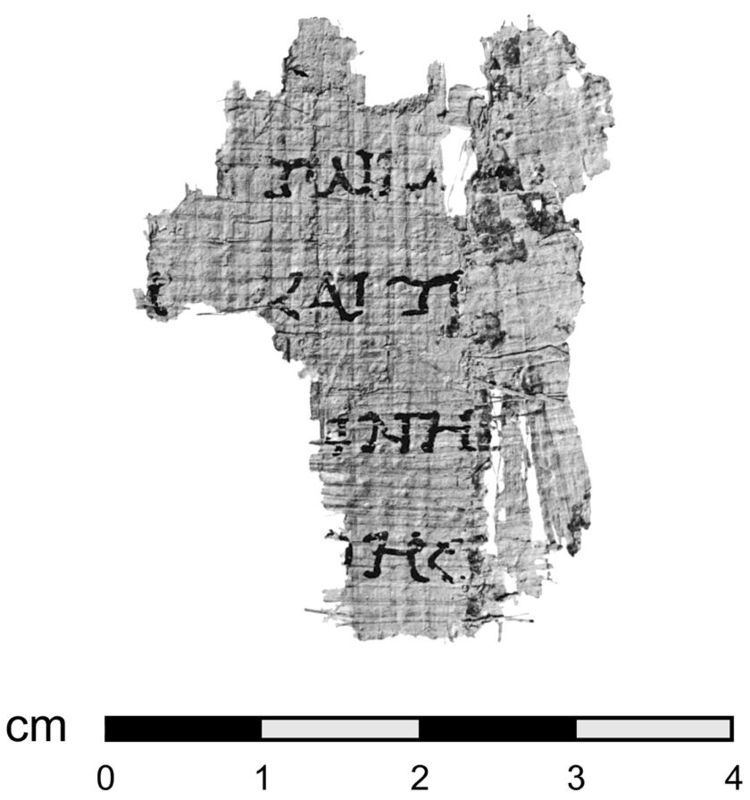 | ||
Among the Dead Sea scrolls, 7Q5 is the designation for a small Greek papyrus fragment discovered in Qumran Cave 7 and dated before anyone claimed to be able to identify it by its style of script as likely having been written sometime between 50 B.C.E. and 50 C.E. The significance of this fragment is derived from an argument made by Spanish papyrologist Jose O'Callaghan in his work ¿Papiros neotestamentarios en la cueva 7 de Qumrân? ("New Testament Papyri in Cave 7 at Qumran?") in 1972, later reasserted and expanded by German scholar Carsten Peter Thiede in his work The Earliest Gospel Manuscript? in 1982. The assertion is that the previously unidentified 7Q5 is actually a fragment of the Gospel of Mark, chapter 6 verse 52-53. The majority of scholars have not been convinced by O'Callaghan's and Thiede's identification and it is "now virtually universally rejected".
Contents
O'Callaghan's proposed identification
This shows the Greek text of Mark 6:52-53. Bold characters represent proposed identifications with characters from 7Q5:
Argument
The argument depends on these assumptions:
- First, the combination of letters ννησ <nnes> in line 4 may be part of the word Γεννησαρετ <Gennesaret>.
- Secondly, the spacing before the word και <kai> ("and") suggests a paragraph break, which is consistent with the normative layout for Mark 6:52-53.
- Furthermore, a computer search "using the most elaborate Greek texts … has failed to yield any text other than Mark 6:52-53 for the combination of letters identified by O’Callaghan et al. in 7Q5".
Several counterarguments exist.
Further counterarguments
Significance
If 7Q5 were identified as Mark 6:52-53 and was deposited in the cave at Qumran by 68 AD, it would become the earliest known fragment of the New Testament, predating P52 by at least some if not many decades.
Since the amount of text in the manuscript is so small, even a confirmation of 7Q5 as Markan "might mean nothing more than that the contents of these few verses were already formalized, not necessarily that there was a manuscript of Mark's Gospel on hand". Since the entirety of the find in Cave 7 consists of fragments in Greek, it is possible that the contents of this cave are of a separate "Hellenized" library than the Hebrew texts found in the other caves. Additionally, as Robert Eisenman points out:
Most scholars agree that the scrolls were deposited in the cave in or around 68 AD, but often mistake this date … for the terminus ad quem for the deposit of the scrolls in the caves/cessation of Jewish habitation at the site, when it cannot be considered anything but the terminus a quo for both of these, i.e., not the latest but the earliest possible date for such a deposit and/or Jewish abandonment of the site. The actual terminus ad quem for both of these events, however difficult it may be to accept at first, is 136 AD. (Italics in original.)
So, for this is long after the currently accepted date range for the composition of Mark, according to Eisenman this would mean that even if it could be proved that 7Q5 is a Mark's fragment, an earlier composition date for the gospel could not be proved. Although the fragment has been analysed and dated paleographically, as Brent Nongbri said, the dating of a such small fragment on account of paleography is not appropriate.
